Mark Winborn's Blog, page 2
June 4, 2017
Forthcoming Teaching and Speaking Schedule June 2017- April 2018 for Mark Winborn, PhD, NCPsyA
June 11, 2017: Moscow Association for Analytical Psychology, Moscow, Russia Sept 1-3, 2017: Centro Jung, Santo Domingo, Dominican Republic
Sept 23-24, 2017: Memphis-Atlanta Jungian Seminar, Memphis, Tennessee
Oct 14-15, 2017: Minneapolis Jung Association, Minneapolis, Minnesota
Nov 3-5, 2017: Case Colloquia, Philadelphia Assoc. of Jungian Analysts, Philadelphia, Pennsylvania
Nov 17, 2017: American Board for Accreditation in Psychoanalysis, New York, New York
Dec 1-2, 2017: Jung Association of Central Ohio, Columbus, Ohio
Jan 26-28, 2018: Case Colloquia, Philadelphia Assoc. of Jungian Analysts, Philadelphia, Pennsylvania
Feb 11-18, 2018: C.G. Jung Institute, Zurich/Küsnacht, Switzerland
Mar 2-4, 2018: Case Colloquia, Philadelphia Assoc. of Jungian Analysts, Philadelphia, Pennsylvania
Apr 16-17, 2018: Case Colloquia, Philadelphia Assoc. of Jungian Analysts, in Santa Fe, New Mexico
Sept 23-24, 2017: Memphis-Atlanta Jungian Seminar, Memphis, Tennessee
Oct 14-15, 2017: Minneapolis Jung Association, Minneapolis, Minnesota
Nov 3-5, 2017: Case Colloquia, Philadelphia Assoc. of Jungian Analysts, Philadelphia, Pennsylvania
Nov 17, 2017: American Board for Accreditation in Psychoanalysis, New York, New York
Dec 1-2, 2017: Jung Association of Central Ohio, Columbus, Ohio
Jan 26-28, 2018: Case Colloquia, Philadelphia Assoc. of Jungian Analysts, Philadelphia, Pennsylvania
Feb 11-18, 2018: C.G. Jung Institute, Zurich/Küsnacht, Switzerland
Mar 2-4, 2018: Case Colloquia, Philadelphia Assoc. of Jungian Analysts, Philadelphia, Pennsylvania
Apr 16-17, 2018: Case Colloquia, Philadelphia Assoc. of Jungian Analysts, in Santa Fe, New Mexico
Published on June 04, 2017 13:14
May 25, 2017
Analytical Psychology and Science: Adversaries or Allies? by Mark Winborn, PhD, NCPsyA
In Psychological Perspectives, 2016, Vol. 59, #4, pp. 490-508
Conclusion :
Jung (like Freud) saw himself as a scientist and was constantly incorporating new ideas from other fields such as linguistics, anthropology, physics, Gnosticism, and alchemy. In fact, Jung has been referred to as a bricoler - a French word that refers to someone who pieces things together from a variety of sources. I believe Jung, if he were alive today, would have embraced the recent findings from infant observation, neurosciences, attachment research, and trauma research just as he did with Fordham’s early forays into child analysis. I would challenge us to consider whether we want to suspend progress in Analytical Psychology, preserving it in the “just so” state we’ve become comfortable with.
I believe our task as Jungians is to re-evaluate, re-cast, re-interpret Jung’s ideas in light of knowledge from other fields – just as Jung did in developing his conceptual framework originally. But we have to be in dialogue with other fields and have an understanding of their findings in order for this to occur. I believe we have a responsibility to the scientific method which shaped and informed Jung’s inquiries; a responsibility to peer more deeply into the relationship between brain and mind and between soma and psyche; into the psychological and neurological underpinnings of conscious and unconscious processes; to seriously evaluate Jung's typological model in light of current neurological and cognitive sciences; and inform our candidates about the current theoretical debate occurring between those holding apriori positions on the nature of archetypal experience and those who now postulate archetypal experience as emergent phenomena.
Ultimately, scientific empiricism can’t study or evaluate all of the elements of Analytical Psychology. Many elements of our field can’t be sufficiently operationally defined in a manner that would allow study through the scientific vertex. But there are many elements of Analytical Psychology which can be examined through a scientific lens - a process by which we can deepen our confidence in our methods and theories, gain a deeper understanding of why certain methods work, and occasionally a casting off or remaking of certain theories or practices which can’t be supported from a scientific perspective. We can’t afford to cast off empiricism out of a preference for subjectivism if Analytical Psychology is to survive another 100 years as something other than a well preserved museum piece. Many fields of scientific inquiry have moved towards the positions advocated by Jung while at the same time adding many new insights it wasn’t possible for Jung to imagine despite his incredible breadth of vision. We do have Jungians among us who are engaged with the scientific community. There are a small cadre of others trying to bring Analytical Psychology into dialogue with contemporary science, including Mario Jacoby, George Hogenson, Joseph Cambray, Jean Knox, Margaret Wilkinson, John Merchant, Robert Romanyshyn, David Rosen, Christian Roesler, and John Haule.
In order for this shift to happen, some who come from backgrounds in the arts and humanities may need to learn something about the scientific method including research design, sample size, types of validity and reliability, as well as some familiarity with statistical inference. But this is not unlike my own journey - coming from a scientist-practitioner model of clinical psychology training and needing to become more intimately familiar with the metaphoric world of myths, fairytales, art, poetry, literature, and religion.
I hope this paper leaves you with the impression that Analytical Psychology and science can be and need to be allies rather than adversaries. We need the findings from contemporary science to help us reflect on what we experience as analytic practitioners. Science needs us to advocate for the subjective element in the laboratory. Be we cannot fulfill Jung’s dream of a Analytical Psychology as a mediatory science unless we are in an ongoing dialogue with the scientific community. In closing, I leave the reader with this thought from Carl Jung (1976, para. 1236) “Ultimate truth, if there be such a thing, demands the concert of many voices.”
Conclusion :
Jung (like Freud) saw himself as a scientist and was constantly incorporating new ideas from other fields such as linguistics, anthropology, physics, Gnosticism, and alchemy. In fact, Jung has been referred to as a bricoler - a French word that refers to someone who pieces things together from a variety of sources. I believe Jung, if he were alive today, would have embraced the recent findings from infant observation, neurosciences, attachment research, and trauma research just as he did with Fordham’s early forays into child analysis. I would challenge us to consider whether we want to suspend progress in Analytical Psychology, preserving it in the “just so” state we’ve become comfortable with.
I believe our task as Jungians is to re-evaluate, re-cast, re-interpret Jung’s ideas in light of knowledge from other fields – just as Jung did in developing his conceptual framework originally. But we have to be in dialogue with other fields and have an understanding of their findings in order for this to occur. I believe we have a responsibility to the scientific method which shaped and informed Jung’s inquiries; a responsibility to peer more deeply into the relationship between brain and mind and between soma and psyche; into the psychological and neurological underpinnings of conscious and unconscious processes; to seriously evaluate Jung's typological model in light of current neurological and cognitive sciences; and inform our candidates about the current theoretical debate occurring between those holding apriori positions on the nature of archetypal experience and those who now postulate archetypal experience as emergent phenomena.
Ultimately, scientific empiricism can’t study or evaluate all of the elements of Analytical Psychology. Many elements of our field can’t be sufficiently operationally defined in a manner that would allow study through the scientific vertex. But there are many elements of Analytical Psychology which can be examined through a scientific lens - a process by which we can deepen our confidence in our methods and theories, gain a deeper understanding of why certain methods work, and occasionally a casting off or remaking of certain theories or practices which can’t be supported from a scientific perspective. We can’t afford to cast off empiricism out of a preference for subjectivism if Analytical Psychology is to survive another 100 years as something other than a well preserved museum piece. Many fields of scientific inquiry have moved towards the positions advocated by Jung while at the same time adding many new insights it wasn’t possible for Jung to imagine despite his incredible breadth of vision. We do have Jungians among us who are engaged with the scientific community. There are a small cadre of others trying to bring Analytical Psychology into dialogue with contemporary science, including Mario Jacoby, George Hogenson, Joseph Cambray, Jean Knox, Margaret Wilkinson, John Merchant, Robert Romanyshyn, David Rosen, Christian Roesler, and John Haule.
In order for this shift to happen, some who come from backgrounds in the arts and humanities may need to learn something about the scientific method including research design, sample size, types of validity and reliability, as well as some familiarity with statistical inference. But this is not unlike my own journey - coming from a scientist-practitioner model of clinical psychology training and needing to become more intimately familiar with the metaphoric world of myths, fairytales, art, poetry, literature, and religion.
I hope this paper leaves you with the impression that Analytical Psychology and science can be and need to be allies rather than adversaries. We need the findings from contemporary science to help us reflect on what we experience as analytic practitioners. Science needs us to advocate for the subjective element in the laboratory. Be we cannot fulfill Jung’s dream of a Analytical Psychology as a mediatory science unless we are in an ongoing dialogue with the scientific community. In closing, I leave the reader with this thought from Carl Jung (1976, para. 1236) “Ultimate truth, if there be such a thing, demands the concert of many voices.”
Published on May 25, 2017 18:59
March 18, 2017
Forthcoming 2018: Interpretation in Jungian Analysis: Art and Technique
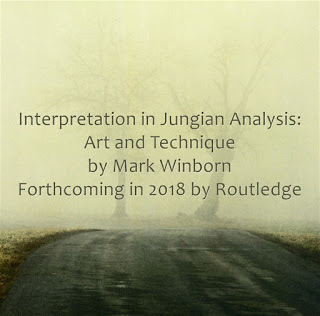
Analytic interpretation is fundamental to, even definitive of, the process of psychoanalysis, Jungian analysis, and psychoanalytic psychotherapy. Interpretation is the medium by which the psychoanalytic art form is transmitted. What one chooses to say in analysis, why one chooses that particular thing to say, how one says it, when one says it - these are some of the building blocks of the interpretive process. This volume will provide those studying Analytical Psychology with the necessary knowledge and tools to incorporate the technique of interpretation. More specifically, readers will learn to differentiate between interpretative and non-interpretive interventions in therapy/analysis; explore of the origins of the interpretive process within psychoanalytic and Jungian frameworks; differentiate various levels and styles of interpretation; and examine particular uses of language in interpretation. Clinical examples will be provided throughout the book to illustrate the clinical technique of interpretation.
Published on March 18, 2017 12:03
Forthcoming New Chapter "The Aesthetics of Being" by Mark Winborn
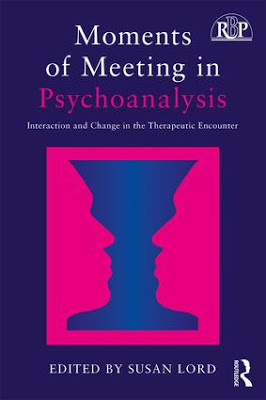 Shared Realities author Mark Winborn is pleased to make a pre-publication announcement for "Moments of Meaning in Psychoanalysis: Interaction and Change in the Therapeutic Encounter" edited by Susan Lord to be released in August in the Relational Psychoanalysis series from Routledge. His chapter contribution is titled "The Aesthetics of Being." The full author listing is: Anthony Bass, Beatrice Beebe, Linda Beeler, Edie Boxer, Joseph Cambray, Catherine Crowther, Denise Davis, Patricia DeYoung, Susan Lord, Elizabeth McKamy, Ajna Pisani, David Pocock, Miki Rahmani, Martin Schmidt, Jonathan Slavin, Malcolm Slavin, Joyce Slochower, Martha Stark, Annie Weiss, Mark Winborn.
Shared Realities author Mark Winborn is pleased to make a pre-publication announcement for "Moments of Meaning in Psychoanalysis: Interaction and Change in the Therapeutic Encounter" edited by Susan Lord to be released in August in the Relational Psychoanalysis series from Routledge. His chapter contribution is titled "The Aesthetics of Being." The full author listing is: Anthony Bass, Beatrice Beebe, Linda Beeler, Edie Boxer, Joseph Cambray, Catherine Crowther, Denise Davis, Patricia DeYoung, Susan Lord, Elizabeth McKamy, Ajna Pisani, David Pocock, Miki Rahmani, Martin Schmidt, Jonathan Slavin, Malcolm Slavin, Joyce Slochower, Martha Stark, Annie Weiss, Mark Winborn. There are moments of connection between analysts and patients during any therapeutic encounter upon which the therapy can turn. Moments of Meeting in Psychoanalysis explores how analysts and therapists can experience these moments of meeting, shows how this interaction can become an enlivening and creative process, and seeks to recognise how it can change both the analyst and patient in profound and fundamental ways.The theory and practice of contemporary psychoanalysis and psychoanalytic psychotherapy has reached an exciting new moment of generous and generative interaction. As psychoanalysts become more intersubjective and relational in their work, it becomes increasingly critical that they develop approaches that have the capacity to harness and understand powerful moments of meeting, capable of propelling change through the therapeutic relationship. Often these are surprising human moments in which both client and clinician are moved and transformed. Moments of Meeting in Psychoanalysis offers a window into the ways in which some of today’s practitioners think about, encourage, and work with these moments of meeting in their practices. Each chapter of the book offers theoretical material, case examples, and a discussion of various therapists’ reflections on and experiences with these moments of meeting. With contributions from relational psychoanalysts, psychotherapists and Jungian analysts, and covering essential topics such as shame, impasse, mindfulness and group work, this book provides new theoretical thinking and practical clinical guidance on how best to work with moments of meeting in any relationally oriented therapeutic practice. Moments of Meeting in Psychoanalysis will be of great interest to psychoanalysts, psychoanalytic psychotherapists, psychologists, social workers, workers in other mental health fields, graduate students and anyone interested in change processes.
Pre-order is available now on Amazon.
https://www.routledge.com/Moments-of-Meeting-in-Psychoanalysis-Interaction-and-Change-in-the-Therapeutic/Lord/p/book/9781138229228
Published on March 18, 2017 10:15
March 4, 2017
C.G. JUNG, von FRANZ & ALCHEMY, Dr. Alfred Ribi in conversation with Stefano Carpani
Published on March 04, 2017 20:53
November 27, 2015
James Grotstein on The Transcendent Position
BION'S "TRANSFORMATION IN 'O'" ANDTHE CONCEPT OF THE "TRANSCENDENT POSITION" by James S. Grotstein(presentation downloaded from: http://www.sicap.it/merciai/bion/papers/grots.htm )
INTRODUCTION
Bion, who was to become the awesome explorer of the "deep and formless infinite" of the psyche, first immersed himself in the theories of Freud and Klein and then gradually developed a revolutionary metapsychological metatheory for psychoanalysis. Bion incurred the criticism of his colleagues by daring to investigate faith, spirituality, religion, mysticism, metaphysics, and fetal mental life. His concepts of transformations in L(ove), H(ate), and K(nowledge), as well as of intuitionistic and subjective science [Transformations in "O" (Ultimate Truth, Absolute Reality)], constitute an objective and numinous psychoanalytic epistemology.
Bion was preoccupied with the concept of ultimate reality and absolute truth and reoriented psychoanalytic metapsychology into a theory of thinking and meta-thinking about emotions. He distinguished the "thoughts-without-a-thinker" from the mind that had to develop in order to think them. I believe that his concept of "intuitionistic thinking" also presumes the presence of a more profound aspect of that mind: Not only did a mind develop to harvest the "thoughts without a thinker," but another aspect of the mind had to originate these "unthought thoughts." I believe that Bion came to a realization that true "thinking" ("dream work alpha" along the dimensions of "L, H, and K") is an unconscious -- if not preconscious -- act and that what we normally term "thinking" (application of the ordinate and abscissa of the "Grid") is really "after-thinking."
By realigning psychoanalysis with metaphysics and ontology (existentialism), Bion perforated the mystique of ontic "objectivity" implicit to logical-positivistic, deterministic science and revealed its own unsuspected mythology--its absolute dependence on sense data. Applying his concept of reversible perspective, he found myths, both collective and personal, to be themselves "scientific deductive systems" in their own right (Bion, 1992). Mostly, Bion founded a new mystical science of psychoanalysis, a numinous discipline based on the abandonment of memory, desire, and understanding. To Bion, mysticism is "seeing things as they truly are -- without disguise" (personal communication). He was preoccupied with the question of how we know what we know.
In this contribution I emphasize my understanding of Bion as the intuitionistic epistemologist, the "emotional mathematician" (Bion, 1965), the "mystical scientist" (Bion, 1970), the intrepid voyager into the deep and formless infinite, "O." I suggest that a "Transcendent Position" is implied by Bion's conception of "O," the latter of which overarches "nameless dread," beta elements, the "thing-in-themselves," the noumenon, "absolute truth," "ultimate reality," and "reverence and awe."
INTRODUCTION
Bion, who was to become the awesome explorer of the "deep and formless infinite" of the psyche, first immersed himself in the theories of Freud and Klein and then gradually developed a revolutionary metapsychological metatheory for psychoanalysis. Bion incurred the criticism of his colleagues by daring to investigate faith, spirituality, religion, mysticism, metaphysics, and fetal mental life. His concepts of transformations in L(ove), H(ate), and K(nowledge), as well as of intuitionistic and subjective science [Transformations in "O" (Ultimate Truth, Absolute Reality)], constitute an objective and numinous psychoanalytic epistemology.
Bion was preoccupied with the concept of ultimate reality and absolute truth and reoriented psychoanalytic metapsychology into a theory of thinking and meta-thinking about emotions. He distinguished the "thoughts-without-a-thinker" from the mind that had to develop in order to think them. I believe that his concept of "intuitionistic thinking" also presumes the presence of a more profound aspect of that mind: Not only did a mind develop to harvest the "thoughts without a thinker," but another aspect of the mind had to originate these "unthought thoughts." I believe that Bion came to a realization that true "thinking" ("dream work alpha" along the dimensions of "L, H, and K") is an unconscious -- if not preconscious -- act and that what we normally term "thinking" (application of the ordinate and abscissa of the "Grid") is really "after-thinking."
By realigning psychoanalysis with metaphysics and ontology (existentialism), Bion perforated the mystique of ontic "objectivity" implicit to logical-positivistic, deterministic science and revealed its own unsuspected mythology--its absolute dependence on sense data. Applying his concept of reversible perspective, he found myths, both collective and personal, to be themselves "scientific deductive systems" in their own right (Bion, 1992). Mostly, Bion founded a new mystical science of psychoanalysis, a numinous discipline based on the abandonment of memory, desire, and understanding. To Bion, mysticism is "seeing things as they truly are -- without disguise" (personal communication). He was preoccupied with the question of how we know what we know.
In this contribution I emphasize my understanding of Bion as the intuitionistic epistemologist, the "emotional mathematician" (Bion, 1965), the "mystical scientist" (Bion, 1970), the intrepid voyager into the deep and formless infinite, "O." I suggest that a "Transcendent Position" is implied by Bion's conception of "O," the latter of which overarches "nameless dread," beta elements, the "thing-in-themselves," the noumenon, "absolute truth," "ultimate reality," and "reverence and awe."
Published on November 27, 2015 10:44
November 18, 2015
The Passing of Harold Searles_1918-2015
I'm sad to report the passing today (1918-2015) of one of the great figures in American psychoanalysis - Harold Searles - who is best remembered for his pioneering work on the psychoanalytic treatment of schizophrenia.
Harold F. Searles (born 1918) is one of the pioneers of psychiatric medicine specialising in psychoanalytic treatments of schizophrenia. Harold Searles has the reputation of being a therapeutic virtuoso with difficult and borderline patients; and of being, in the words of Horacio Etchegoyen, president of the IPA, “not only a great analyst but also a sagacious observer and a creative and careful theoretician”.
Searles, Harold F.. Countertransference and related subjects; selected papers., Publisher New York, International Universities Press, 1979Searles, Harold F.: Collected papers on schizophrenia and related subjects, Imprint New York, International Universities Press, 1965Searles, Harold F: My Work With Borderline Patients, Publisher: Jason Aronson, 1994, Searles, Harold F.: The Nonhuman Environment in Normal Development and in Schizophrenia (New York, 1960)
https://en.wikipedia.org/wiki/Harold_...
Harold F. Searles (born 1918) is one of the pioneers of psychiatric medicine specialising in psychoanalytic treatments of schizophrenia. Harold Searles has the reputation of being a therapeutic virtuoso with difficult and borderline patients; and of being, in the words of Horacio Etchegoyen, president of the IPA, “not only a great analyst but also a sagacious observer and a creative and careful theoretician”.
Searles, Harold F.. Countertransference and related subjects; selected papers., Publisher New York, International Universities Press, 1979Searles, Harold F.: Collected papers on schizophrenia and related subjects, Imprint New York, International Universities Press, 1965Searles, Harold F: My Work With Borderline Patients, Publisher: Jason Aronson, 1994, Searles, Harold F.: The Nonhuman Environment in Normal Development and in Schizophrenia (New York, 1960)
https://en.wikipedia.org/wiki/Harold_...
Published on November 18, 2015 14:05
November 16, 2015
Michael Eigen - Image, Sense, Infinities, and Everyday Life
Excerpt from Karnacology Article Introducing Eigen's New Book:
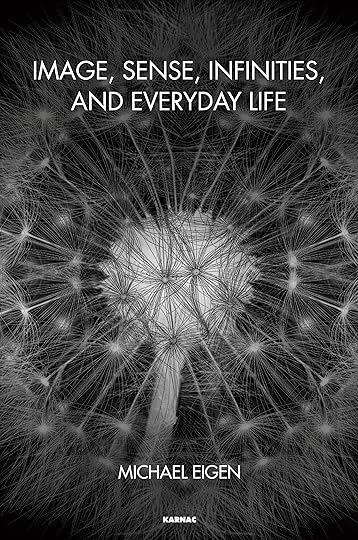 "I have been fascinated by images ever since I can remember. How embarrassing for my mother, proudly introducing her three-year-old son to the principal of the school at which she taught only to have the little one say, “You’re a whale.” To this moment, I can see myself seeing this good man as a whale as vividly as the instant it happened. His body and demeanour became a prompt for a waking dream image selected from swarms of inner possibilities, seas of images within. For the little boy, people were not only people. They also were these images and, at times, this led to trouble.
"I have been fascinated by images ever since I can remember. How embarrassing for my mother, proudly introducing her three-year-old son to the principal of the school at which she taught only to have the little one say, “You’re a whale.” To this moment, I can see myself seeing this good man as a whale as vividly as the instant it happened. His body and demeanour became a prompt for a waking dream image selected from swarms of inner possibilities, seas of images within. For the little boy, people were not only people. They also were these images and, at times, this led to trouble.
Wilfred R. Bion wrote a good deal about “verbal images” and for a poet, verbal images can create experiential realities. I’m no longer sure when I became aware that words were packed with colour and tone. I could actually hear music and see colours when writing and sometimes speaking, as if words were colours and tones and the latter words. The separation ordinarily made between such media did not hold for me. Later in life I was drawn to and profoundly influenced by psychoanalysts who painted, drew, and had a feel for poetry and music – Marion Milner, D. W. Winnicott, and Wilfred Bion.
synaesthesia
Sense is a word that spans many dimensions of experience, a kind of unifying word: e.g., the five or six senses, proprioception and kinaesthesia, common sense, animal or vital sensing, sense as meaning, intuition, a felt sense, a self-sense, a sense of self and other, God-sense. A lot of sensing goes on in psychoanalytic sessions, with one’s self, others, art and writing. One senses mood, atmospheric conditions, feeling.
Sensing often gives rise to images acting as expressive “feelers”, touching and opening experiential worlds moments convey. Herbert Read felt that image preceded idea by about two hundred years. Hopefully, in a particular life the situation is more condensed. It is a real issue, how we sense our life and our images of it. Identity fields flow from them.
In Western epistemology, sensation and image have been second-class citizens until the Romantic Movement, but poets and mystics have always valued them. As I point out in The Psychotic Core , Freud used images drawn from spiritual experience to describe creative processes.
Image, Sense, Infinities, and Everyday Life
The first chapter of my new book Image, Sense, Infinities, and Everyday Life explores birth as an image sense used to describe feeling. Literal, physical birth turns into an expressive verbal image for sensations of change and transformation. Bion spoke of psychoanalysis as embryonic, not yet born or in uneven aspects of birth. Similarly, human personality. There are ways we are born and fail to be born all life long. Biblical psalms and prophesies link states of birth to mood. When God is gone, the psalmist may die out emotionally. When the Divine Presence manifests, the psalmist comes emotionally alive. We repeatedly undergo variations of death-rebirth experiences emotionally. The prophet promises God will give us a new soul, a new spirit, fresh as snow. Spiritual texts throughout the world supply colorful language to express affective dramas.
Bion links a sense of empty-full with the feeding situation, the infant’s full and empty states at the mother’s breast, sensations that turn into a vocabulary for emotional and spiritual states. Emptiness-fullness expand in meaning as one grows. They take many turns in Bion’s work. For example, Bion values a space unsaturated by meaning so that meaning can grow, in contrast with over-saturated space with little room for more. We develop a sense for the rise and fall of affect in sessions, the interplay of good and bad feeling, and a kind of internal psychic “body English” towards tipping the balance for the better.
Book Description - Image and sensing have been underrated in Western thought but have come into their own since the Romantic movement and have always been valued by poets and mystics. Images come in all shapes and sizes and give expression to our felt sense of life. We say we are made in the image of God, yet God has no image. What kind of image do we mean? An impalpable image carrying impalpable sense? An ineffable sense permeates and takes us beyond the five senses, creating infinities within everyday life. Some people report experiencing colour and sound when they write or hear words. Sensing mediates the feel of life, often giving birth to image.In this compelling book, Michael Eigen leads us through an array of images and sensing in many dimensions of experience, beginning with a sense of being born all through life, psychosis, mystical moments, the body, the pregnancy of “no”, shame, his session with André Green, and his thoughts related to James Grotstein, Wilfred Bion, and Marion Milner. The author concludes with notes on his life as a young man leading him into the therapeutic vocation he has fostered and which has fostered him for nearly sixty years.Michael Eigen is a psychologist and psychoanalyst, and the 2015 recipient of the NAAP Lifetime Achievement Award. He is Associate Clinical Professor of Psychology in the Postdoctoral Program in Psychotherapy and Psychoanalysis at New York University, and a Senior Member of the National Psychological Association for Psychoanalysis. He is the author of a number of books, including Toxic Nourishment, The Psychoanalytic Mystic, Feeling Matters and Flames from the Unconscious. He contributed a chapter to Mark Winborn's book Shared Realities. His latest book, Image, Sense, Infinities, and Everyday Life, is published by Karnac Books.
 "I have been fascinated by images ever since I can remember. How embarrassing for my mother, proudly introducing her three-year-old son to the principal of the school at which she taught only to have the little one say, “You’re a whale.” To this moment, I can see myself seeing this good man as a whale as vividly as the instant it happened. His body and demeanour became a prompt for a waking dream image selected from swarms of inner possibilities, seas of images within. For the little boy, people were not only people. They also were these images and, at times, this led to trouble.
"I have been fascinated by images ever since I can remember. How embarrassing for my mother, proudly introducing her three-year-old son to the principal of the school at which she taught only to have the little one say, “You’re a whale.” To this moment, I can see myself seeing this good man as a whale as vividly as the instant it happened. His body and demeanour became a prompt for a waking dream image selected from swarms of inner possibilities, seas of images within. For the little boy, people were not only people. They also were these images and, at times, this led to trouble.Wilfred R. Bion wrote a good deal about “verbal images” and for a poet, verbal images can create experiential realities. I’m no longer sure when I became aware that words were packed with colour and tone. I could actually hear music and see colours when writing and sometimes speaking, as if words were colours and tones and the latter words. The separation ordinarily made between such media did not hold for me. Later in life I was drawn to and profoundly influenced by psychoanalysts who painted, drew, and had a feel for poetry and music – Marion Milner, D. W. Winnicott, and Wilfred Bion.
synaesthesia
Sense is a word that spans many dimensions of experience, a kind of unifying word: e.g., the five or six senses, proprioception and kinaesthesia, common sense, animal or vital sensing, sense as meaning, intuition, a felt sense, a self-sense, a sense of self and other, God-sense. A lot of sensing goes on in psychoanalytic sessions, with one’s self, others, art and writing. One senses mood, atmospheric conditions, feeling.
Sensing often gives rise to images acting as expressive “feelers”, touching and opening experiential worlds moments convey. Herbert Read felt that image preceded idea by about two hundred years. Hopefully, in a particular life the situation is more condensed. It is a real issue, how we sense our life and our images of it. Identity fields flow from them.
In Western epistemology, sensation and image have been second-class citizens until the Romantic Movement, but poets and mystics have always valued them. As I point out in The Psychotic Core , Freud used images drawn from spiritual experience to describe creative processes.
Image, Sense, Infinities, and Everyday Life
The first chapter of my new book Image, Sense, Infinities, and Everyday Life explores birth as an image sense used to describe feeling. Literal, physical birth turns into an expressive verbal image for sensations of change and transformation. Bion spoke of psychoanalysis as embryonic, not yet born or in uneven aspects of birth. Similarly, human personality. There are ways we are born and fail to be born all life long. Biblical psalms and prophesies link states of birth to mood. When God is gone, the psalmist may die out emotionally. When the Divine Presence manifests, the psalmist comes emotionally alive. We repeatedly undergo variations of death-rebirth experiences emotionally. The prophet promises God will give us a new soul, a new spirit, fresh as snow. Spiritual texts throughout the world supply colorful language to express affective dramas.
Bion links a sense of empty-full with the feeding situation, the infant’s full and empty states at the mother’s breast, sensations that turn into a vocabulary for emotional and spiritual states. Emptiness-fullness expand in meaning as one grows. They take many turns in Bion’s work. For example, Bion values a space unsaturated by meaning so that meaning can grow, in contrast with over-saturated space with little room for more. We develop a sense for the rise and fall of affect in sessions, the interplay of good and bad feeling, and a kind of internal psychic “body English” towards tipping the balance for the better.
Book Description - Image and sensing have been underrated in Western thought but have come into their own since the Romantic movement and have always been valued by poets and mystics. Images come in all shapes and sizes and give expression to our felt sense of life. We say we are made in the image of God, yet God has no image. What kind of image do we mean? An impalpable image carrying impalpable sense? An ineffable sense permeates and takes us beyond the five senses, creating infinities within everyday life. Some people report experiencing colour and sound when they write or hear words. Sensing mediates the feel of life, often giving birth to image.In this compelling book, Michael Eigen leads us through an array of images and sensing in many dimensions of experience, beginning with a sense of being born all through life, psychosis, mystical moments, the body, the pregnancy of “no”, shame, his session with André Green, and his thoughts related to James Grotstein, Wilfred Bion, and Marion Milner. The author concludes with notes on his life as a young man leading him into the therapeutic vocation he has fostered and which has fostered him for nearly sixty years.Michael Eigen is a psychologist and psychoanalyst, and the 2015 recipient of the NAAP Lifetime Achievement Award. He is Associate Clinical Professor of Psychology in the Postdoctoral Program in Psychotherapy and Psychoanalysis at New York University, and a Senior Member of the National Psychological Association for Psychoanalysis. He is the author of a number of books, including Toxic Nourishment, The Psychoanalytic Mystic, Feeling Matters and Flames from the Unconscious. He contributed a chapter to Mark Winborn's book Shared Realities. His latest book, Image, Sense, Infinities, and Everyday Life, is published by Karnac Books.
Published on November 16, 2015 07:55
October 30, 2015
Curator of The Psychoanalytic Muse Interviewed by "Speaking of Jung"
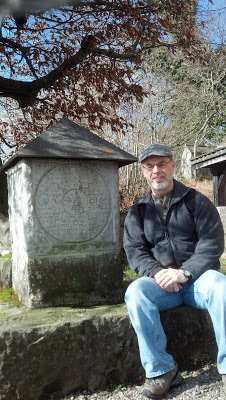 Dr. Mark Winborn at Bollingen, the lake
Dr. Mark Winborn at Bollingen, the lakeretreat of C.G. Jung in SwitzerlandDr. Mark Winborn was recently interviewed by Laura London of the “Speaking of Jung Podcast.” The interview has been uploaded to her website and can be listened to or downloaded here:http://www.speakingofjung.com/…/10/26/episode-6-mark-winbornIt’s 55 minutes long and revolves around the general theme of “What is Jungian Analysis?” but it covers a wide territory contrasting Jungian with psychoanalytic perspectives, medications, treatment effectiveness, the therapeutic relationship, choosing an analyst, etc.
Published on October 30, 2015 10:05
October 17, 2015
"Shared Realities" Nominated for 2015 Gradiva Award - NAAP
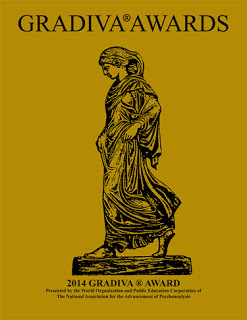 "Shared Realities," edited by Mark Winborn and published by Fisher King Press has been nominated for the 2015 Gradiva award - awarded annually by the National Association for the Advancement of Psychoanalysis - for the best published, produced, or publicly exhibited works that advance psychoanalysis. The final determination for the nominees will be made during the NAAP annual meeting November 14th in NYC.
"Shared Realities," edited by Mark Winborn and published by Fisher King Press has been nominated for the 2015 Gradiva award - awarded annually by the National Association for the Advancement of Psychoanalysis - for the best published, produced, or publicly exhibited works that advance psychoanalysis. The final determination for the nominees will be made during the NAAP annual meeting November 14th in NYC.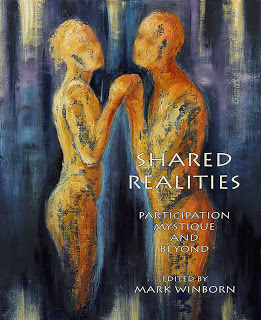
Published on October 17, 2015 07:48



